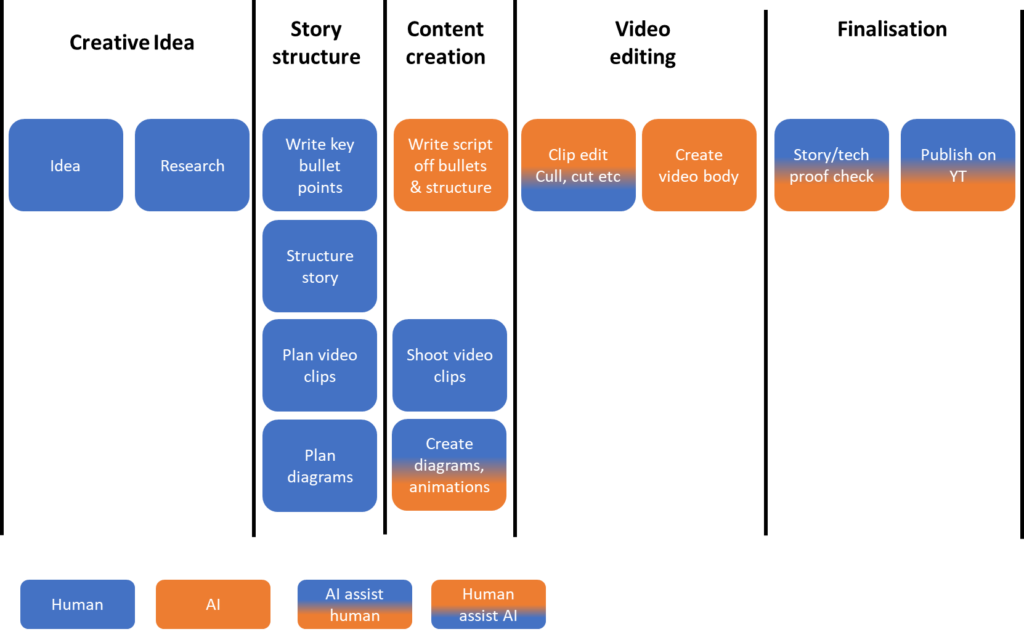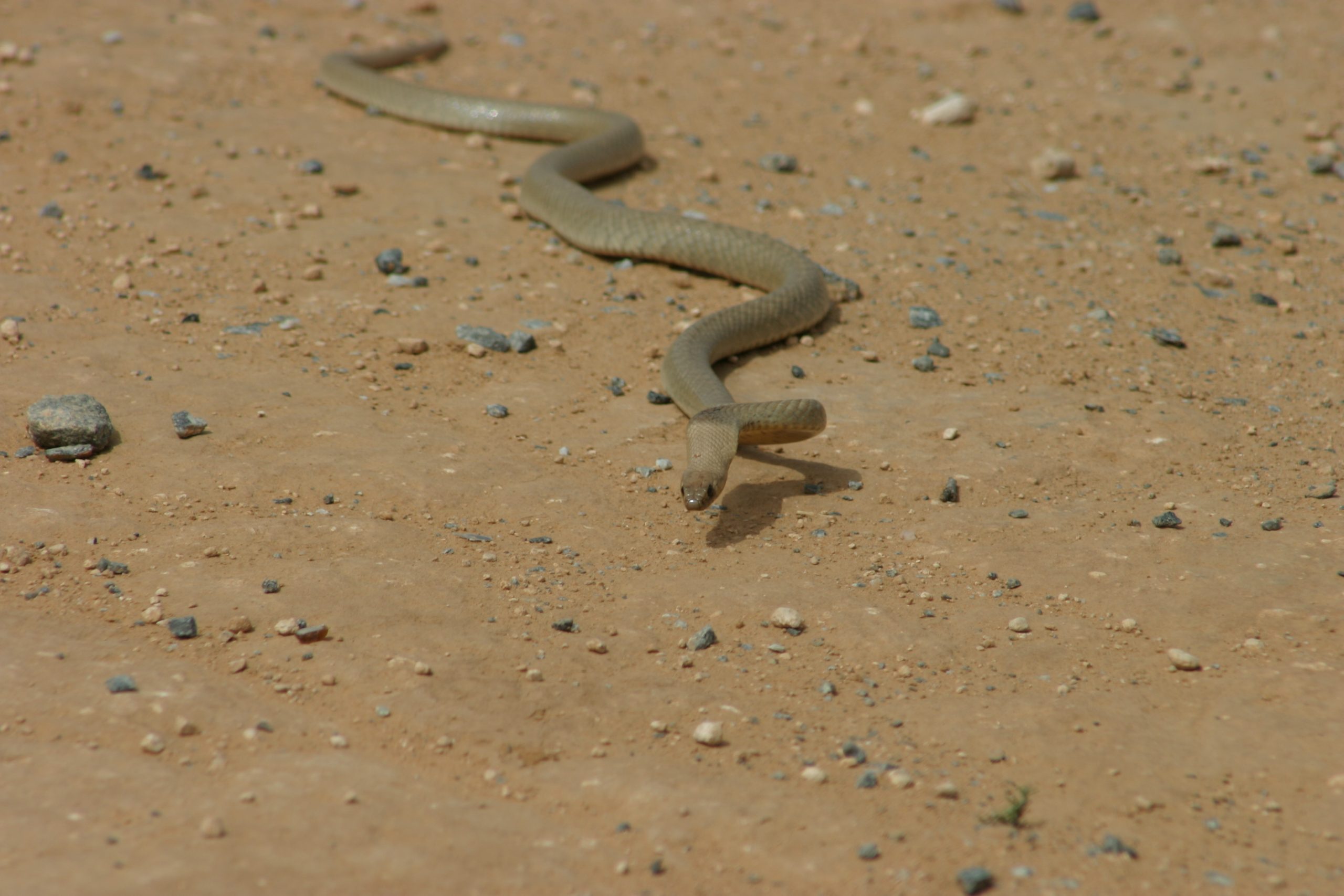
How AI could help a YouTube video-educator
AI is everywhere now, and it’s only going to take over more and more of the world and our jobs. Trying to resist change is futile; it didn’t work for the mechanisation of agriculture or the industrialisation of manual labour, and it won’t work for white-collar jobs either. We need to embrace the changes and look for ways to leverage them and remain relevant.
Content creation is no different. The world is video now not text, and now AI can assist with video production. But where and how? I put this diagram together from my perspective as an educational-technical videographer:

Here’s how I see AI working.
Creative Idea
This is the basic idea for a video, for example “are wide tyres better than narrow tyres”, “what force is required to winch up a hill”, “show how to use an electric brake controller” or “how to recover from an oversteer skid”.
Yes, AI may be able to come up with ideas, but I think I can do better, and also do the research around the topic, which in my case will often involve original experiments to gather data, not just googling what others have done. I don’t need much AI help here, but it may be useful to answer questions although at this early stage, I never trust AI answers as I’ve seen how inaccurate they can be when they try to cover topics I do know about.
Story Structure
Once I’ve got the research done it’s time to list the key things cover, and the structure. For example, a desert dune driving video might need to cover these points:
Preparation
1. Know how your car works; if it needs its centre diff locked, does it have a sand mode, air suspension height
2. Reduce tyre pressures; 50% of placard pressure is a good starting point so you float on top of soft sand and don’t get bogged
3. Fit a sand flag for safety so you can be seen coming over the top of dunes
Driving
4. Straight up and down dunes as any time you turn you make 4 ruts not 2, slowing you down
5. Use momentum at the base, and arrive at the top of the dune with minimal speed as you cannot see over
6. Use cross-axle differential locks if there are significant ruts
7. On the downside of the dune, gather momentum if safe, and don’t bother use hill descent control, engine braking is fine
8. Use high range if speeds will get above about 50km/h between dunes, otherwise low range
I’ll also need to figure out what video clips I need to illustrate each of those points, and diagrams. I try and use words, diagrams and video to make and reinforce the points for each type of learner. Again, this stage is all me, and it’s my expertise. I don’t see AI doing better than me in this area for a long while yet…but it doesn’t need to be better than me, it just needs to be more cost-effective than me and given the cost of AI writing an article or similar is essentially zero, it’s hard to compete cost-effectiveness.
Content Creation
Those bullets need to be turned into a narrative, and AI can do that well as I’m not asking it to do research, I’m giving it the answers and all it needs to do is create a cohesive narrative.
I’ll also need video clips and I’ll need to go shoot those. AI can’t help there. But what it can do is find stock footage for me, and if I organise my own video library, go get me the clips I need from my own archives -I have thousands of car photos and clips of raw car footage. I’d love AI to help me organise that as sometimes I forget what I have, and it’s a big job to categorise it all.
Diagrams and animations are a big part of what I do, and I can’t really see AI taking over that just yet, but it can probably help. I’ve not seen AI diagram tools yet though.
Video editing
When you come back from a video shoot you have way more material than you’ll use. It all needs to be culled and edited; the failed shots deleted, often the first or last couple of seconds cut, and if there’s been three takes you only need one. AI could help here with this task which is essentially creating video clips ready for use from the raw footage. I would also like it to automatically fix up sound with hiss/plosive removal, wind removal, volume normalisation etc.
So now we’ve got the script, all the video clips we need, photos, diagrams…everything. Time to create the video body! This is where AI can help; it can narrate the script it wrote off my bullets, and add in the various media items to illustrate the point, delivering a final version. Being AI, it should also be perfect with not having overlapping sound, poor transitions and other technical video errors. I’d still check and guide it, but AI could certainly put it all together.
Finalisation
Now we have a finished video. It needs checking over, and that’s in two parts; the technical/educational aspect – does it meet the original objectives of the video?, and the videoproof aspect which is the video-specific tuning and errors like sound levels.
What else could AI do?
If I interviewed someone then I could more easily leave the job of editing to AI. It’s pretty simple; use the camera angle which shows whoever is talking, with occasional cut-backs to the interviewer nodding or looking appalled or whatever, and then make chapters based on new questions, and throw in some b-roll clips to break things up. I think AI could do that pretty quickly now. It’s the more technical videos where I think I still have a role to play.
However, the thing is that AI now is the worst it’ll ever be. Like a car of 1920 compared to today, or the iPhone 1 compared to the iPhone 15, AI will only get better and better, and us content creators need to move with the times. Even if we’re not quite sure what that looks like!
Title image was AI generated with the prompt: “AI helping someone at a computer workstation create a technical educational video for YouTube about cars”


